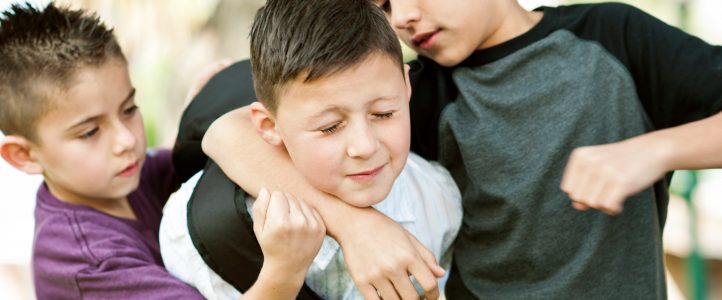
Violence is Vastly Different in Children Than Adults
Violence in and of itself comes from people who are in a dysregulated state. This is vastly different in children, than adults. There are significant differences in the ability to manage what adults are thinking about, and their emotional response to what they are thinking about. Children are very much led by strong emotions which interfere with rational thought. Adults, with healthy frontal lobe development, have additional cognitive capacities to manage their emotions, and outward expressions of their emotions, and corresponding thoughts. School violence is different than typical community violence, adult violence, or violence in prisons. When children are displaying violent behavior, there is significant hope for change as their brains are still forming. We have the capacity to be proactive and intervene in a way that will hopefully stop violent tendencies from continuing or worsening.
Trauma Responsive Schools Reduce Aggression
Adults who understand the impact of trauma on children can purposefully create a culture of calm, inclusive of nonjudgmental thinkers, which establishes an environment where property damage and harm is reduced. We can assist adults in the creation of a culture that is so soothing, that presenting big, loud, physical displays does not fit. When teams of adults choose to create a soothing environment for children who have experienced trauma, the children can take risks. They can take risks to not display the defensive things they have done, the ways they have tried to manage the environment, and the ways they have tried to manage adults. They can slowly let some of those things go and start engaging with the adults, and in classrooms, and in learning.
Trauma Responsive Schools Reduce School Violence
Adults need to understand why children display physicality, aggression, or property damage. When we understand where that comes from within the brain, we are able to slow that process down so the child can get out of the limbic system and the corresponding emergent response. With proper training and interventions, children can learn to slow down their emotional state, identify what they perceive to be true in the moment, move forward through rational thought and insight on their impact, and make a choice on how to proceed. We can teach kids how to manage some of that internal dialogue that results in them feeling like their only option is to be physical, violent, or aggressive.
Proactive Practices to Prevent School Violence
If we want to prevent school violence, we have to understand where violence comes from. We have to understand what would position a child in a place where they feel their only option is to be physical with the person or the property that is in front of them. When children have such fear inside of them that they believe they have to manage places like schools, or manage people like teachers and administrators, we must assist them in resolving the fear. When we understand a child’s perception, through the implementation of proper interventions with fidelity, we can slow their display down. We can work to guide the student to the realization that there may not be the same level of risk at school, than they have experienced with other people and places in the past.
We also have to teach adults not to establish a defensive response when a child is displaying maladaptive things that may elicit an emotional reaction. Children may be using language that is not pleasant such as swearing or name calling. They might even become physical with property or people. We must get adults to understand that all of that is in an attempt to try to manage the adult or the situation. We must seek to understand where that is coming from and what needs it serves for the child. When we understand that it is not personal, and it has nothing to do with us, then we use our energy to better position ourselves to support the needed skills of that child. At that point, we can truly assist the child and we can ALL move forward.
For more information on Teach to Heal, please click here to contact Teach to Heal team.
